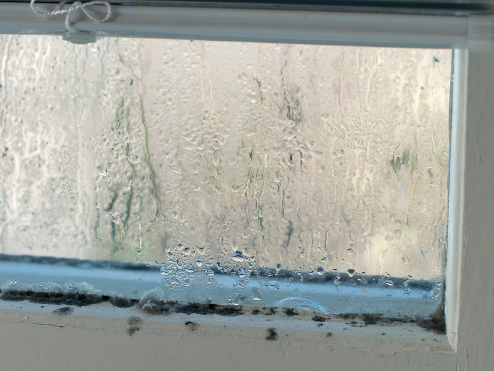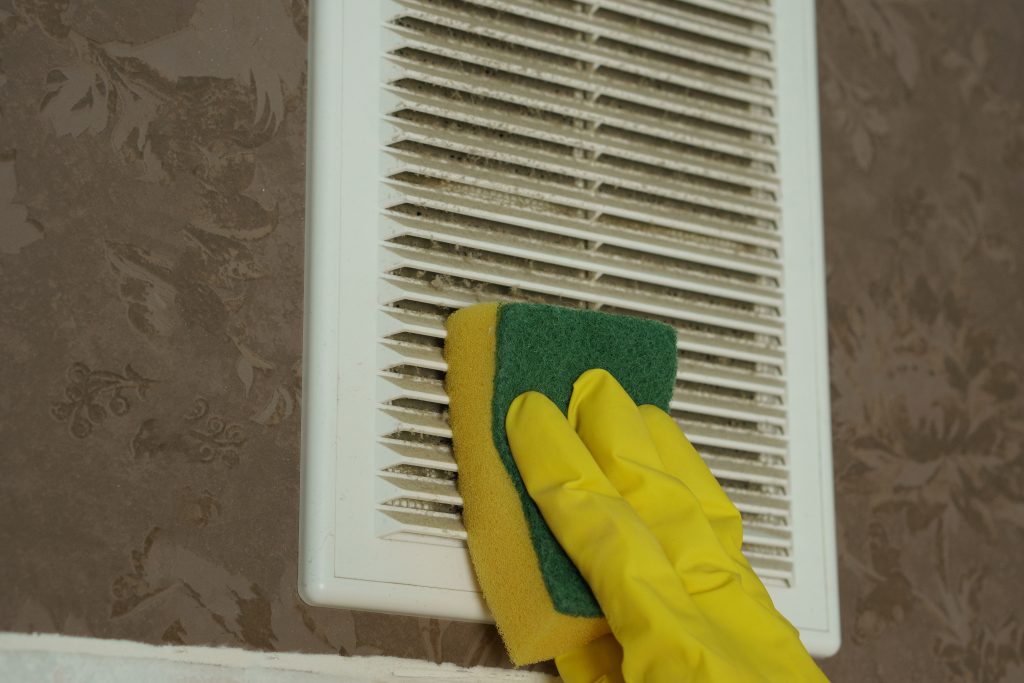
Condensation Solutions From The Specialists
Condensation should be managed as soon as it is noticed, as the longer it remains unchecked, the more likely a mould problem will develop. To prevent condensation and its associated problems from occurring, property owners must identify and address any sources of excess moisture. This can include reducing humidity levels indoors, proper ventilation, and controlling the temperature to ensure condensation is kept at bay. There are various condensation solutions available to help property owners.
By taking the appropriate steps to manage condensation effectively, you can protect your property from potential health risks caused by black mould in the long term.
Condensation Control Takeaway
- Condensation is a serious problem that can cause damp and mould to form in your property.
- The causes of condensation include high humidity levels, uneven temperatures, and activities that produce a lot of steam.
- There are a few things you can do to prevent condensation, including using a dehumidifier, ensuring all rooms are at the same temperature, and ventilating areas where there is a lot of steam.
- Damp and mould can have significant impacts on your health, including respiratory problems, allergies, skin irritation, mental health problems, and depression.
- If you’re struggling with damp and mould in your home, there are a number of condensation solutions that can help to improve the air quality and make your home a healthier place to live.
The Different Types Of Damp
There are essentially three types of damp a property can be affected by:
- Condensation
- Rising damp
- Penetrating damp
Rising damp and penetrating damp are caused by water ingress from outside of the property. Whereas, condensation is the result of high humidity in your home where hot, moist air makes contact with cold surfaces.
Condensation damp is usually more of a problem during winter when surfaces are colder giving humid air a place to condense. However, rising damp and penetrating damp are more likely to occur during wetter weather.
Ways to reduce condensation in your home
Condensation is the build-up of water vapour in the air. This can happen when warm air meets cold surfaces, or when there is a lot of humidity in the air. If condensation is not controlled, it can lead to problems such as mould growth, musty odours, and structural damage. There are a number of condensation solutions that can be used to control condensation in a property, including ventilation, dehumidifiers, and air conditioners. By taking steps to control condensation, you can help to keep your property healthy and free from damage.

The Causes Of Condensation
One of the most common (and frustrating) problems in the home is condensation. It can cause mould and mildew to grow, and it can even damage your walls and ceilings. So what causes condensation, and how can you prevent it from happening?
There are a few different things that can cause condensation. One is high humidity levels. If the air in your home is very moist, it can condense on cold surfaces like windows and mirrors. Another cause is uneven temperatures. If one part of your home is much warmer or cooler than the rest, condensation can form on the colder surfaces. Finally, condensation can be caused by activities that produce a lot of steam, like cooking and showering.
Preventing Condensation in Your Home
You may not give it much thought, but the air inside your home is full of water vapour. This water vapor comes from many sources, including cooking, bathing, plant life, and even your own breath. In warm weather, this water vapor usually escapes outside through open windows or vents. But in cold weather, when windows and doors are shut tight to keep warmth in, that same water vapour can turn into a problem.
When the temperature of that water vapour drops below the dew point—the temperature at which water vapour turns into liquid water—condensation occurs. And when condensation happens on cold surfaces like windows or walls, it can lead to all sorts of problems, including mould growth, peeling paint, and rotting wood
So how do you prevent condensation in your home?
1. Keep the Temperature Steady
One of the most important things you can do to prevent condensation is to maintain a consistent temperature throughout your home. Big swings in temperature—like turning on the heating after a cold day or blasting it in the morning—can cause condensation to form quickly. So instead of warming your home up all at once, try to keep the temperature steady by using a programmable thermostat.

2. Use Extractor Fans
Another way to prevent condensation is to use extractor fans when cooking or showering. These fans remove moisture-laden air from your home and release it outside, which helps keep indoor humidity levels low and makes it less likely for condensation to form on walls and windows
3. Inspect Your Home for Leaks
Leaky pipes and ductwork can also lead to condensation because they allow humid outside air into your home. So if you suspect you have a leak, have it repaired as soon as possible by a qualified professional—preventing water damage will be cheaper than repairing it!
4. Keep Vents Unblocked

Vents play an important role in preventing condensation by allowing moist air to escape from your home. So make sure all your vents are clear of debris and not blocked by furniture or other objects.
5. Consider a Dehumidifier

If you’ve tried all of the above tips and condensation is still a problem in your home, consider buying a dehumidifier. Dehumidifiers work by removing moisture from the air, which can help reduce indoor humidity levels and make it less likely for condensation to form on surfaces like walls and windows.
Persistent Condensation
If you have attempted to follow our recommendations yet your property is still displaying the signs and symptoms of excessive condensation, it is recommended that you should discuss the problem with one of our condensation specialists.
It is often the case that repeat, persistent and serious condensation and black mould problems will only be solved by installing ventilation units.
Positive Pressure Ventilation (PPV)
Positive pressure ventilation units will eliminate condensation worries by effectively ventilating every room in the house from a position on the landing or in the hallway of a property
Heat Recovery Ventilation (HRV)
Heat recovery ventilation units are perfect for combating condensation in high humidity areas of the house – they extract damp moist air from rooms while also recovering up to 75% of heat that would be lost to outside with conventional fans.
How Damp And Mould Can Affect Your Health
Damp and mould can have a significant impact on your health, especially if you suffer from allergies or respiratory problems. Mould spores can cause respiratory problems such as coughing and chest tightness, and can also trigger asthma attacks. Damp conditions also provide the perfect environment for dust mites to thrive, which can exacerbate allergies and cause skin irritation. In addition, damp and mould can also lead to mental health problems such as depression and anxiety.
If you’re struggling with damp and mould in your home, there are a number of condensation solutions that can help to improve the air quality and make your home a healthier place to live.
The Signs Of A Property With Condensation Problems
Condensation is a key indicator that there is too much moisture in the air for the building materials to absorb, and it can be a sign of other more serious problems such as damp. Condensation often occurs in properties during the winter months when there is a large difference between the temperature inside and outside the property. To help prevent condensation, property owners should take measures to improve ventilation, such as opening windows and doors when cooking or using the bathroom and using extractor fans. In addition, it is important to keep the property warm by using central heating and insulation.
By taking these steps, property owners can help to reduce condensation and improve the overall air quality in their homes.
How To Treat Condensation And Damp Problems
Condensation and damp are problems that can affect any home. condensation happens when water vapour in the air condenses into water droplets on cold surfaces. The most common places for condensation to form are on windows, walls, and ceilings. Damp is a general term used to describe a variety of problems, including condensation, mould, and musty odours.
While condensation and damp can be caused by many things, the most common cause is poor ventilation. In order to treat condensation and damp problems, it is important to identify the source of the problem and take steps to improve ventilation. Some common condensation solutions include using a dehumidifier, opening windows and doors to ventilate rooms, and using fans to circulate air. By taking these steps, you can help to prevent condensation and damp from forming in your home. Although, oftentimes a professional specialist condensation survey will need to be carried out and a comprehensive solution put in place.
We’re Ready To Help You
Please get in touch with our friendly team today and we can get the ball rolling on your project sooner than you think.
